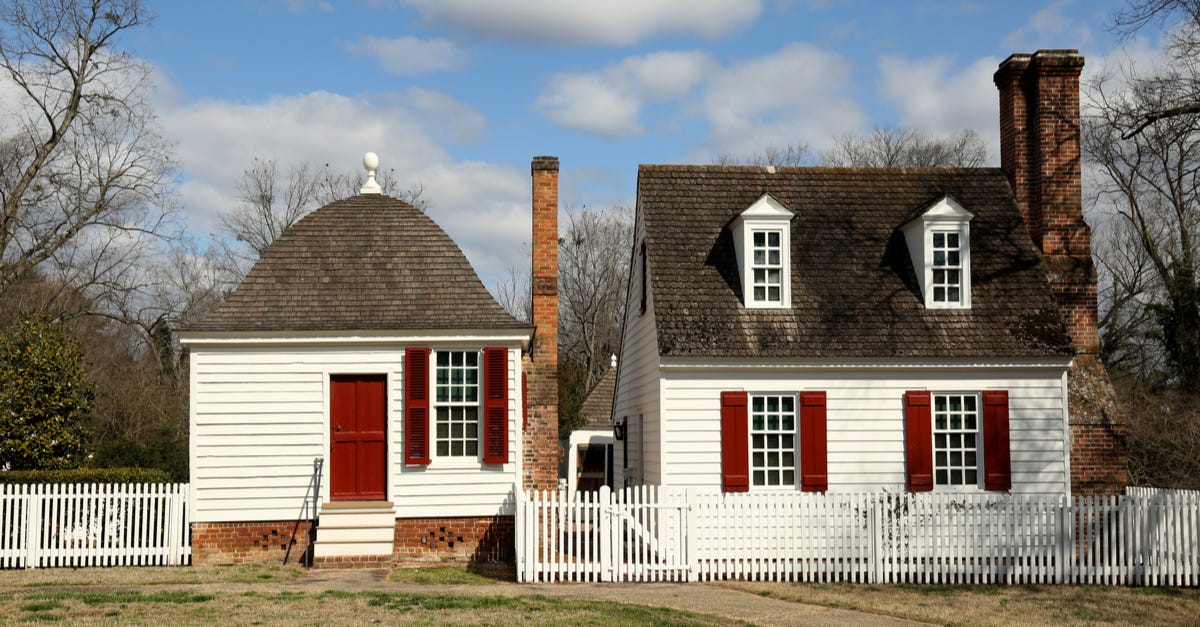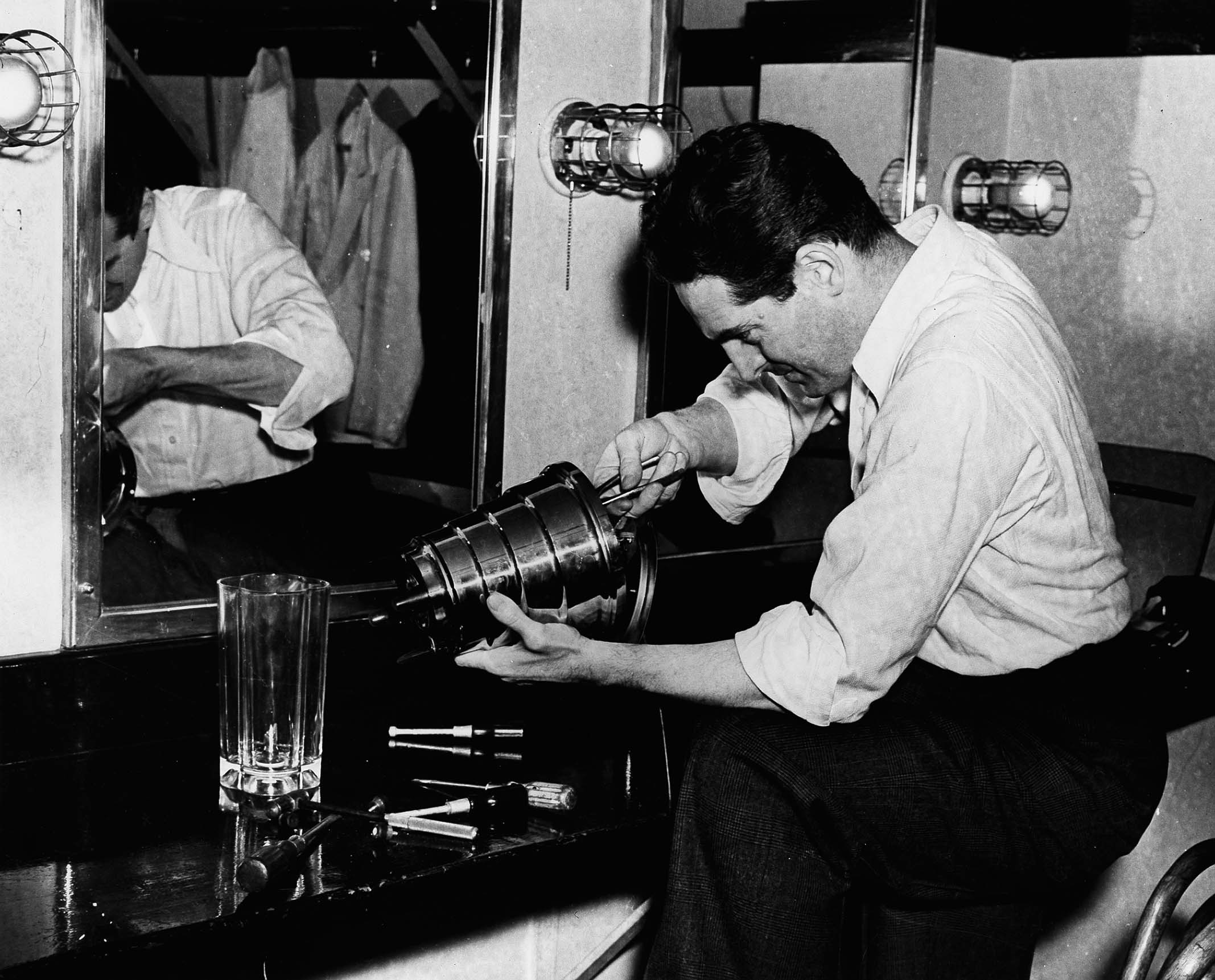

Articles
When Was BBQ Invented
Modified: January 6, 2024
Discover the fascinating history of BBQ in this informative article. Explore the origins and development of this mouthwatering cooking technique.
(Many of the links in this article redirect to a specific reviewed product. Your purchase of these products through affiliate links helps to generate commission for Storables.com, at no extra cost. Learn more)
Introduction
Barbecue, a mouthwatering culinary tradition loved by many, has a rich and fascinating history that stretches back centuries. Whether it’s a backyard cookout, a summer festival, or a savory meal at a local barbecue joint, the tantalizing aroma and flavorful taste of smoked meats have become synonymous with good times and good food.
The origins of barbecue can be traced back to ancient times, when humans discovered the transformative power of fire. Cooking meat over an open flame not only made it more palatable and safer to consume, but it also infused it with a distinct smoky flavor that would become the hallmark of barbecue.
Early civilizations developed their own techniques for barbecue, utilizing various methods and tools to create delicious grilled meals. From ancient Greece, where skewered meats were cooked over hot coals, to China, where barbecue originated as a method to preserve meat, these early traditions laid the foundation for the diverse barbecue practices we know today.
Barbecue made its way to the Americas through European explorers and African slaves, who brought their own culinary traditions and cooking techniques with them. In the United States, barbecue took on a unique and regional flavor, with different areas developing their own style and preferences.
The popularity of barbecue continued to rise in the United States, spreading from the south to other parts of the country. In the late 19th and early 20th centuries, barbecue became a staple at fairs, picnics, and social gatherings, solidifying its place in American culture.
Today, barbecue has evolved into a global phenomenon, with countries around the world embracing their own versions of this beloved cooking method. From the tandoori barbecue of India to the asado of Argentina, each culture adds its own unique twist to the art of barbecue.
The equipment used in barbecue has also evolved over time. From primitive open pit fires to modern smokers and grills, advancements in technology have made it easier than ever to achieve that perfect smoky flavor.
In recent years, barbecue has seen a resurgence in popularity, with chefs and pitmasters experimenting with new flavors, cuts of meat, and cooking techniques. From fusion barbecue that incorporates elements of different cuisines to vegetarian and vegan barbecue options, there’s something for everyone in the world of barbecue.
So whether you’re savoring a plate of ribs slathered in tangy sauce, enjoying a juicy pulled pork sandwich, or relishing a perfectly grilled steak, take a moment to appreciate the rich history and cultural significance behind this timeless culinary tradition.
In the following sections, we’ll delve deeper into the origins of barbecue, explore the different regional styles in the United States, take a global tour of barbecue around the world, and discuss the evolution of barbecue equipment. Get ready to immerse yourself in the smoky world of barbecue!
Key Takeaways:
- Barbecue has a rich history rooted in ancient times, evolving into a global culinary phenomenon with diverse regional styles and modern trends, showcasing its versatility and adaptability.
- The evolution of barbecue equipment, modern trends, and global influences have transformed barbecue into a vibrant and cherished culinary tradition, celebrating tradition, community, and the joy of sharing delicious food.
Read more: When Was The Bathtub Invented
The Origins of Barbecue
Barbecue, with its tantalizing smoky flavors and juicy meats, has a history as rich as its flavors. The origins of barbecue can be traced back to ancient times when our ancestors discovered the art of cooking meat over an open flame.
Primitive humans quickly realized that cooking meat over fire not only enhanced its taste but also made it safer to consume. The heat from the fire helped to kill off harmful bacteria and parasites, making the meat less likely to cause illness. Additionally, the process of smoking the meat over the fire infused it with a unique and delicious smoky flavor.
The earliest form of barbecue was likely a simple roasting method, where meat was placed on sticks and held over an open fire. As civilizations began to develop more advanced techniques, various tools and methods were invented to make cooking over fire more efficient and flavorful.
Ancient Greek civilization contributed to the evolution of barbecue with their skewered meats. They would impale pieces of meat on spits and place them over a fire to cook. This method allowed the meat to cook evenly and prevented it from sticking to the flames.
In China, barbecue had a different purpose – preservation. The art of smoking and drying meat was developed as a method to preserve it for long periods. The meat would be hung over a fire or in special smokehouses, slowly drying and acquiring a smoky flavor that acted as a natural preservative.
As barbecue techniques began to spread across different regions and cultures, unique flavors and methods emerged. In the Caribbean, for example, the Taino people utilized a grilling technique, known as “barbacoa,” which involved cooking meats on wooden frames over a bed of coals.
The arrival of European explorers and African slaves in the Americas brought new influences and techniques to the art of barbecue. European explorers introduced the concept of slow-cooking meats on spits, while African slaves brought their expertise in smoking and seasoning techniques.
These diverse culinary traditions merged and evolved in the United States, leading to the development of regional barbecue styles. Each region developed its own unique flavors, sauces, and cooking methods, creating a rich tapestry of barbecue culture across the country.
As barbecue continued to gain popularity, it became a central part of social gatherings and celebrations. Barbecues became a way for communities to come together, enjoy good food, and share stories. This communal aspect of barbecue is deeply ingrained in its history and continues to be a cherished tradition today.
In the next section, we will explore the early barbecue techniques and delve into the barbecue traditions of ancient civilizations.
Early Barbecue Techniques
As barbecue continued to evolve, different cultures and civilizations developed their own unique techniques for cooking meat over an open flame. These early barbecue techniques laid the foundation for the diverse methods we see today.
One of the earliest known barbecue techniques is spit-roasting. This method involves skewering meat on a long rod, known as a spit, and slowly rotating it over an open fire. Spit-roasting ensures that the meat cooks evenly and allows the juices to distribute throughout, resulting in tender and flavorful cuts.
Another early technique is direct grilling, where meat is placed directly over the flames or hot coals. This method produces a delicious charred exterior and a juicy interior. Direct grilling requires attentiveness and skill to ensure that the meat is cooked to perfection without burning.
In addition to spit-roasting and direct grilling, smoking emerged as a popular method of cooking and preserving meat. Smoking involves slow-cooking meat over low heat and indirect heat, often with the addition of wood chips or chunks to produce smoke. The smoke not only imparts a distinct flavor but also acts as a natural preservative, prolonging the shelf life of the meat.
Early civilizations found innovative ways to create smoke for smoking techniques. In some cultures, they used hollowed-out logs or pits filled with smoldering wood to produce smoke and indirect heat. These smoking techniques gave meats a unique smoky flavor and increased their shelf life, making them ideal for long journeys or periods of scarcity.
Marinades and rubs were also used to enhance the flavors of the meat. Ancient civilizations developed mixtures of herbs, spices, and oils to coat the meat before cooking. These marinades and rubs not only added flavor but also helped tenderize the meat, resulting in a more enjoyable culinary experience.
Throughout history, various cooking vessels were also used in barbecue techniques. Clay pots, for example, were common in many cultures, allowing the meat to cook slowly and retain its moisture. Similarly, the use of cast-iron skillets and griddles became popular, providing a versatile cooking surface for searing, grilling, and smoking.
These early barbecue techniques were not only about satisfying hunger but also about bringing communities together. Barbecues became social events, where people would gather to celebrate, share stories, and enjoy the company of others. This communal aspect of barbecue continues to be an integral part of its cultural significance.
As barbecue techniques evolved and spread throughout different regions of the world, they intermingled with local customs and ingredients, resulting in the diverse range of barbecue styles we see today. From slow-smoked ribs in the American South to yakitori skewers in Japan, each culture’s unique barbecue techniques add their own flavors and traditions to this time-honored culinary practice.
In the next section, we will explore the role of barbecue in ancient civilizations and how it became an integral part of their cultures.
Barbecue in Ancient Civilizations
Barbecue, in various forms, has been a part of human civilization for thousands of years. From the ancient Egyptians to the Mayans, different cultures embraced the art of cooking meat over an open flame, developing their own unique barbecue practices and traditions.
Ancient Egypt is known to have a rich culinary history, and barbecue was no exception. Hieroglyphics and archaeological evidence reveal that Egyptians enjoyed grilling and smoking meats as early as 3000 BCE. They would marinate meats in a mixture of herbs, spices, and oils, then grill them over charcoal fires. The resulting flavors were enhanced by the use of aromatic woods, such as cedar and cypress.
In the Indus Valley civilization, which thrived from 3300 to 1300 BCE in what is now modern-day Pakistan and northwest India, evidence of early barbecue practices has also been unearthed. Excavations have revealed brick structures resembling barbecues or tandoors, where meats were grilled or cooked in clay ovens called tandoors.
The Mayans, a Mesoamerican civilization that reached its peak between 250 and 900 CE, also had a strong barbecue culture. They utilized a method called “pib,” which involved cooking meats underground. A pit would be lined with stones and heated with a wood fire until it reached a high temperature. The meat, wrapped in banana leaves, would be placed on top of the hot stones and covered with more leaves and damp cloth. The result was tender, flavorful meat with a smoky aroma.
Similarly, the ancient Greeks and Romans incorporated barbecue into their culinary traditions. The Greeks developed the technique of skewering meat on spits and cooking it over open fires. They enjoyed a variety of grilled meats, from lamb and beef to fish and poultry. The Romans also embraced grilling, with wealthy citizens organizing lavish feasts that showcased the skill of their cooks.
In China, barbecue has a long history that can be traced back to the Zhou Dynasty (1046-256 BCE). The technique of smoking and grilling meat was used not only for enhancing flavor but also as a means of food preservation. Meats would be marinated in a mixture of soy sauce, honey, and spices, then smoked or dried to extend their shelf life.
Across these civilizations, barbecue served not only as a method of cooking but also as a social and cultural event. Barbecues brought people together, offering an opportunity to celebrate, bond, and share stories. The act of barbecuing was often associated with festivities, religious ceremonies, and important life events, solidifying its place in the fabric of ancient societies.
The ancient barbecue techniques developed by these civilizations laid the foundation for the diverse global barbecue practices we see today. From the marinades and spices of Egypt to the underground pits of the Mayans, these early traditions continue to influence and inspire barbecue enthusiasts around the world.
In the next section, we will explore how barbecue made its way to the Americas and became an integral part of the culinary landscape in the United States.
Barbecue in the Americas
The arrival of European explorers and African slaves in the Americas brought new influences and techniques to the art of barbecue. The merging of European and African culinary traditions, along with the use of native ingredients, resulted in the development of a distinct barbecue culture in the Americas.
European explorers, such as Christopher Columbus, introduced the concept of slow-roasting meats on spits. This method involved skewering meat and cooking it slowly over an open fire. The European approach to barbecue focused on the use of salt, herbs, and spices to enhance the flavors of the meat.
African slaves, on the other hand, brought their expertise in smoking and seasoning techniques. They had a strong tradition of cooking meats low and slow over indirect heat, which resulted in tender, flavorful, and heavily seasoned dishes.
The blending of these European and African techniques with the abundant ingredients found in the Americas gave rise to unique barbecue styles. Native ingredients, such as corn, beans, and various peppers, became integral parts of barbecue recipes, adding depth and flavor to the dishes.
One notable style of barbecue that emerged in the Americas is the barbacoa, which traces its roots back to the Caribbean and Mexico. Barbacoa involves slow-cooking meat over an open fire or in a pit, often with the meat wrapped in banana leaves. This method results in tender, juicy meat with a distinct smoky flavor.
In the southern United States, particularly in regions like the Carolinas and Georgia, whole hog barbecue became a prominent style. Whole hogs would be slow-roasted over an open pit, resulting in succulent and flavorful meat. The sauces and spices used in these regions varied, with vinegar-based sauces being common in the Carolinas and tomato-based sauces in Georgia.
In Texas, where cattle ranching was prevalent, a style of barbecue focused on beef emerged. Beef brisket became the star of the Texas barbecue scene, slow-smoked to perfection and often served with a side of tangy barbecue sauce. The emphasis on beef in Texas barbecue sets it apart from other regional styles.
Throughout the United States, barbecue also became popular for its association with social gatherings and celebrations. Barbecue pits and grills were a common sight at fairs, picnics, and community events. These gatherings provided an opportunity for people to come together, enjoy great food, and share stories and laughter.
As barbecue continued to gain popularity in the Americas, it became a symbol of regional pride and identity. Barbecue styles in different parts of the United States developed loyal followings, with passionate debates arising over the best techniques, sauces, and meats.
Today, the influence of barbecue in the Americas can be seen in various cultural celebrations and culinary traditions. From the smoky flavors of barbacoa in Mexico to the mouthwatering ribs of the American South, barbecue has become deeply ingrained in the culinary tapestry of the region.
In the next section, we will explore the rise of barbecue in the United States and how it became an integral part of American cuisine.
Read more: When Was Jenga Invented
The Rise of Barbecue in the United States
Barbecue in the United States has a long and storied history, with its roots dating back to the arrival of European explorers and African slaves. However, it wasn’t until the 19th century that barbecue truly became ingrained in American culture, leading to its rise as a beloved culinary tradition.
In the early days of the United States, barbecue was primarily enjoyed in the southern regions, where African slaves had a significant influence on the cuisine. African slaves brought with them the techniques of slow-cooking meat over indirect heat and the use of flavorful spices and seasonings.
Barbecue quickly became a popular method of cooking in the South due to the abundance of livestock, particularly pigs, and the availability of wood for smoking. Whole hog barbecue, slow-cooked over an open pit, became a signature style in southern states like North Carolina, South Carolina, and Georgia.
During the 19th century, barbecue gained further popularity with the emergence of agricultural fairs and social gatherings. Barbecue pits were a common sight at these events, where whole hogs and other meats would be slow-roasted for hours, allowing the flavors to develop and the meats to become tender and juicy.
As the country expanded westward, barbecue traditions began to spread to other regions. In Texas, the rise of cattle ranching led to the development of a unique barbecue style centered around beef. Beef brisket, slow-smoked to perfection and served with tangy barbecue sauce, became a Texas barbecue staple.
Barbecue’s popularity continued to soar in the late 19th and early 20th centuries, with the rise of urban barbecue joints. These establishments catered to the working class, offering affordable and delicious barbecue meals. African American pitmasters became renowned for their superior barbecue skills, creating a demand for their expertise.
By the mid-20th century, barbecue had become a cherished part of American cuisine, with regional styles and preferences firmly established. The popularity of barbecue graced the covers of magazines, and cookbooks dedicated to barbecue became bestsellers.
As the nation became more interconnected, barbecue transcended regional boundaries and captured the hearts and taste buds of people from all backgrounds. Barbecue restaurants, festivals, and competitions began to spring up nationwide, allowing barbecue enthusiasts to showcase their skills and celebrate the diversity of barbecue.
The rise of barbecue in the United States also led to the development of iconic barbecue sauces. Each region had its own unique sauce, ranging from the tangy vinegar-based sauces of the Carolinas to the sweet and smoky tomato-based sauces of Kansas City.
Today, barbecue continues to thrive in the United States, with ongoing debates about the best techniques, sauces, and meats. Barbecue joints, food trucks, and backyard cookouts bring people together to savor slow-cooked ribs, pulled pork, and tender brisket, all infused with the smoky flavor that makes barbecue so irresistible.
As we continue our journey through the world of barbecue, we will explore the different regional barbecue styles in the United States and delve into the mouthwatering flavors that define each one.
The origins of BBQ can be traced back to indigenous peoples in the Caribbean, who cooked meat over a wooden structure called a barbacoa. This method was later adopted by Spanish explorers and eventually spread to the United States.
Regional BBQ Styles in the US
Barbecue in the United States is not a one-size-fits-all affair. Different regions of the country have developed their own unique barbecue styles, each with its own flavors, techniques, and passionate devotees. Let’s take a tour of the distinctive regional BBQ styles across the United States.
1. Carolina BBQ: The Carolinas are known for their vinegar-based barbecue sauces. In Western North Carolina, pork shoulder or whole hogs are slow-cooked over hardwood coals and then chopped or pulled apart. The meat is typically dressed with a tangy vinegar and pepper-based sauce. In Eastern North Carolina, the sauce is a vinegar and pepper mixture without any tomato, often used as a marinade and finishing sauce.
2. Kansas City BBQ: Kansas City-style barbecue is all about the sweet and smoky flavors. It features a variety of meats, including ribs, brisket, and burnt ends. The meat is slow-smoked over a mixture of hickory and fruitwoods and basted with a thick, tomato-based sauce that’s sweet, tangy, and a little bit spicy.
3. Texas BBQ: Texas takes its barbecue seriously, and the state is known for its love of beef. Central Texas-style barbecue showcases cuts like brisket and beef ribs, smoked low and slow over oak or mesquite wood. The meat is usually seasoned with just salt and pepper, allowing the rich beef flavors to shine. In East Texas, you’ll find pork prepared similar to Southern barbecue, while West Texas enjoys a more rustic and direct grilling style.
4. Memphis BBQ: Memphis, Tennessee, is renowned for its barbecue, particularly pork ribs. Memphis-style ribs are typically slow-cooked in a pit, seasoned with a dry rub of spices, and then served without sauce. However, if sauce is added, it is a tangy and slightly sweet tomato-based sauce. Memphis barbecue also includes pulled pork and smoked sausage, often served with coleslaw and barbecue beans.
5. Alabama BBQ: Alabama takes pride in its white barbecue sauce, a unique mayonnaise-based sauce with vinegar, lemon juice, and spices. While pork is commonly used in other regions, Alabama barbecue often centers around chicken—smoked or grilled—and is slathered in the tangy white sauce. Other meats, like pork shoulder or beef, can also be found, typically served with a side of this distinctive sauce.
6. Hawaiian BBQ: In Hawaii, barbecue showcases the flavors of the islands. Influenced by Asian and Polynesian cuisines, Hawaiian barbecue often features marinated meats, such as kalua pork, which is slow-cooked in an underground pit. The resulting meat is tender and flavorful, often served with rice, macaroni salad, and tropical fruit salsa.
These are just a few examples of the diverse regional barbecue styles within the United States. Each style reflects the cultural heritage, local ingredients, and techniques that have been passed down through generations. Regardless of the region, one thing remains constant: the love and passion for slow-cooked, smoky meats that make American barbecue a true culinary art form.
In the next section, we’ll expand our barbecue journey beyond the United States and explore barbecue traditions from around the world.
Barbecue Around the World
Barbecue is not limited to the United States; it has become a global phenomenon with diverse interpretations and flavors in different parts of the world. From Asia to Europe, Africa to South America, let’s embark on a journey to explore the enticing barbecue traditions around the globe.
1. Argentina – Asado: Asado is a way of life in Argentina, where grilling meat is more than just a cooking method; it’s a social event. Traditional asado involves slow-cooking various cuts of beef, including ribs, steaks, and sausages, over a wood or charcoal fire. The smoky, succulent flavors are complemented by chimichurri sauce—a mixture of parsley, garlic, vinegar, and oil.
2. Brazil – Churrasco: Churrasco is an integral part of Brazilian cuisine. It features various cuts of meat, such as picanha (top sirloin), pork loin, and sausage, skewered and grilled on long metal rods. The meat is seasoned with rock salt and cooked over open flames, resulting in tender, juicy, and flavorful barbecue. Churrasco is often enjoyed with farofa (toasted cassava flour) and feijoada (black bean stew).
3. South Korea – Bulgogi: Bulgogi, meaning “fire meat,” is a staple of Korean cuisine. Thinly sliced beef or pork is marinated in a mixture of soy sauce, sugar, garlic, and sesame oil, then grilled to perfection. The resulting barbecue is tender, caramelized, and bursting with savory flavors. It is commonly enjoyed wrapped in lettuce leaves with rice and assorted side dishes.
4. Jamaica – Jerk: Jerk barbecue is synonymous with the flavors of the Caribbean. It originated in Jamaica, where meat is marinated with a spicy mixture of scotch bonnet peppers, allspice, thyme, garlic, and other seasonings. The meat is then slow-cooked over pimento wood or charcoal, infusing it with a smoky and spicy taste. Jerk can be applied to various meats, including chicken, pork, and fish.
5. South Africa – Braai: Braai is deeply rooted in South African culture and is more than just a way of cooking—it represents a social gathering. Meat, such as boerewors (spiced sausage), lamb chops, and beef steaks, is grilled over open flames. It’s a time when friends and family come together, often with a wide array of sides and salads, to enjoy the flavors of the fire and connect.
6. India – Tandoori: Tandoori barbecue is a specialty of India, where meats are marinated in a blend of yogurt and spices, including garam masala, ginger, garlic, and turmeric. The meat is then cooked in a tandoor, a traditional clay oven, resulting in succulent and smoky flavors. Tandoori dishes, such as chicken tikka and seekh kebab, often accompany naan bread and aromatic rice.
These are just a few examples of the diverse barbecue traditions around the world. Each culture brings its own unique flavors, techniques, and cultural significance to the art of grilling meats. Whether it’s the sizzling steaks of Argentina, the spicy jerk of Jamaica, or the communal braai of South Africa, barbecue transcends borders and unites people through their love of deliciously grilled food.
As we continue our exploration, we will now dive into the evolution of barbecue equipment and the modern trends shaping the world of barbecue.
Evolution of BBQ Equipment
The art of barbecue has come a long way in terms of equipment and tools. From the primitive open fire pits to the modern smokers and grills we use today, the evolution of barbecue equipment has transformed the way we cook and enjoy this beloved culinary tradition.
1. Open Fire Pits: In the early days of barbecue, open fire pits were the primary cooking method. These pits were simple in design, consisting of a hole dug into the ground with a grate or metal bars placed over it. Meat would be skewered or placed directly on the grate and cooked over the flames, slowly absorbing the smoky flavors.
2. Brick and Mortar Barbecue Pits: As barbecue gained popularity, brick and mortar barbecue pits became a common sight. These permanent structures allowed for better control of temperature and airflow, contributing to more consistent cooking results. The pits were often lined with fireproof bricks, and grates or metal bars were used to hold the meat.
3. Barrel Smokers: In the mid-20th century, barrel smokers became popular for backyard barbecues. These smokers, often made from repurposed oil drums, featured a main cooking chamber with a firebox attached. The meat would be placed in the main chamber, and the fire in the firebox would produce smoke and indirect heat, resulting in a slow and flavorful cook.
4. Charcoal Grills: Charcoal grills revolutionized backyard barbecue cooking. These grills feature a basin to hold charcoal and a grate on top to hold the food. Charcoal briquettes provide consistent heat, allowing for even cooking and the smoky flavor that barbecue enthusiasts crave. Charcoal grills are still widely used today and are a staple in many households.
5. Gas Grills: Gas grills gained popularity in the latter half of the 20th century for their convenience and ease of use. These grills use propane or natural gas as fuel and provide instant heat. They offer precise temperature control and make it easy to grill or barbecue any day of the year. Gas grills have become a popular choice for novice grillers and those who prefer quick and efficient outdoor cooking.
6. Pellet Smokers/Grills: Pellet smokers and grills offer a unique approach to barbecue. These devices use wood pellets as fuel, which are automatically fed into a combustion chamber. The temperature can be controlled digitally, allowing for precise heat regulation. Pellet smokers produce a desirable, smoky flavor and are favored by those who enjoy the versatility of both smoking and grilling.
7. Modern Smokers and Grills: Today, there is an extensive range of smokers and grills available, each with its own set of features and capabilities. Electric smokers, ceramic kamado grills, and even high-tech Wi-Fi-enabled barbecue devices have made their way into the market, offering enthusiasts more options and control over their cooking process.
The evolution of barbecue equipment has made it easier for both amateurs and professionals to achieve the perfect barbecue experience. Improved heat control, enhanced smoke infusion, and versatile cooking options give us the ability to experiment with different flavors, techniques, and ingredients.
As the world of barbecue continues to evolve, one thing remains constant—the joy of gathering around the fire, sharing delicious food, and creating lasting memories with family and friends.
In the final section, we will explore the modern barbecue trends that are influencing the way we approach and enjoy barbecue today.
Read more: When Was The Freezer Invented
Modern Barbecue Trends
Barbecue is constantly evolving and adapting to the changing culinary landscape. Today, we see several modern barbecue trends that are shaping the way we approach and enjoy this beloved cooking tradition.
1. Fusion Barbecue: One of the most exciting trends in modern barbecue is fusion cuisine. Barbecue is blending with other culinary styles, incorporating flavors and techniques from various cuisines. Whether it’s Korean barbecue tacos, barbecue-infused pizzas, or Indian-inspired barbecue dishes, fusion barbecue offers a creative and adventurous twist to traditional flavors.
2. Vegetarian and Vegan Barbecue: With the growing popularity of plant-based diets, vegetarian and vegan barbecue has gained significant traction. Barbecue enthusiasts are finding innovative ways to smoke, grill, and season vegetables, fruits, tofu, and plant-based protein alternatives. This trend showcases that barbecue is not limited to meat, and can be enjoyed by individuals with different dietary preferences.
3. Craft Barbecue Sauces and Rubs: Artisanal, handcrafted barbecue sauces and rubs have surged in popularity. Barbecue lovers are experimenting with unique combinations of spices, herbs, fruits, and other ingredients to create their own signature flavors. Craft sauces and rubs offer a personalized touch to barbecued dishes and elevate the overall taste experience.
4. Farm-to-Table Barbecue: The farm-to-table movement has influenced barbecue as well. Many barbecue enthusiasts now emphasize locally sourced, high-quality meats and ingredients. They strive to support local farmers and prioritize sustainability. Knowing the origin and quality of the ingredients enhances the overall barbecue experience and creates a deeper connection to the food being prepared.
5. Competition Barbecue: Barbecue competitions have become popular events where pitmasters showcase their skills and compete for the title of the best barbecue. These competitions are not just about cooking delicious food; they also foster a sense of camaraderie and community. Participants push the boundaries of barbecue, experimenting with techniques, flavors, and presentations to win over judges and enthusiasts.
6. Grilling Technology: Technology has made its way into the world of barbecue with the advent of high-tech grilling equipment. Wi-Fi-enabled grills and smokers allow for remote temperature monitoring and control, ensuring a precise and consistent cooking experience. Digital thermometers, meat probes, and smartphone apps have made it easier than ever to achieve the desired doneness and perfect results.
7. BBQ Events and Festivals: Barbecue events and festivals have become a hub for barbecue aficionados to indulge in a wide array of barbecue styles, flavors, and techniques. These gatherings bring together pitmasters, food vendors, and enthusiasts to celebrate the art of barbecue and enjoy a range of delicious dishes. These events foster a sense of community and provide an opportunity for barbecue enthusiasts to share their love for this culinary tradition.
These modern barbecue trends showcase the versatility and adaptability of this age-old cooking technique. By embracing innovation and exploring new flavors, barbecue continues to captivate taste buds around the world.
As we celebrate the rich history, diverse traditions, and exciting trends of barbecue, it’s clear that this beloved culinary practice is here to stay, satisfying our appetites and bringing people together one delicious meal at a time.
End of the article.
Conclusion
Barbecue, with its smoky aromas, succulent meats, and mouthwatering flavors, has a history rooted in ancient times and has evolved into a global culinary phenomenon. From the early techniques of cooking over open fires to the modern smokers and grills of today, barbecue has captivated taste buds and brought communities together for centuries.
The origins of barbecue can be traced back to primitive humans discovering the transformative power of fire, realizing that cooking meat over an open flame not only enhanced its taste but also made it safer to consume. Over time, cultures around the world developed their unique barbecue traditions, incorporating regional ingredients, spices, and cooking techniques.
In the United States, barbecue found fertile ground, with different regions forging their distinct styles. From the tangy vinegar-based sauces of the Carolinas to the sweet and smoky flavors of Kansas City and the slow-cooked brisket of Texas, regional barbecue styles showcase the diversity and creativity within the country’s culinary landscape.
Barbecue has expanded beyond borders, influencing and enriching cuisines worldwide. From the smoky depths of Argentina’s asado to the rich flavors of South Korean bulgogi, each culture has embraced barbecue in its own distinctive way, adding their unique flavors and techniques to this beloved tradition.
The evolution of barbecue equipment has played a vital role in the advancement of barbecue techniques and has made it more accessible to people of all skill levels. From the simplicity of open fire pits to today’s high-tech smokers and grills, barbecue enthusiasts can experiment with flavors, achieve precise cooking results, and explore new horizons.
Modern barbecue trends continue to shape the landscape of this culinary art form. Fusion barbecue blends cultural flavors, vegetarian and vegan options cater to diverse diets, and farm-to-table practices emphasize sustainability. The world of barbecue is ever-evolving, embracing technology, and celebrating the creativity and passion of its dedicated enthusiasts.
As we conclude our journey through the rich history, regional styles, global influences, and modern trends of barbecue, it is evident that barbecue has transcended mere sustenance. It has become a celebration of tradition, community, and the joy of gathering around the fire to share delicious food and create lasting memories.
So, the next time you savor a tender piece of smoky meat or relish the flavors of a unique barbecue sauce, remember the centuries of tradition and innovation that have transformed barbecue into the vibrant and cherished culinary tradition it is today.
Frequently Asked Questions about When Was BBQ Invented
Was this page helpful?
At Storables.com, we guarantee accurate and reliable information. Our content, validated by Expert Board Contributors, is crafted following stringent Editorial Policies. We're committed to providing you with well-researched, expert-backed insights for all your informational needs.














0 thoughts on “When Was BBQ Invented”